“If the mini-humbucker had remained exclusive to Epiphone, it may have been a mere footnote. It developed a following because they ended up in Gibson guitars”: The mini-humbucker’s surprising history – and why it deserves more love
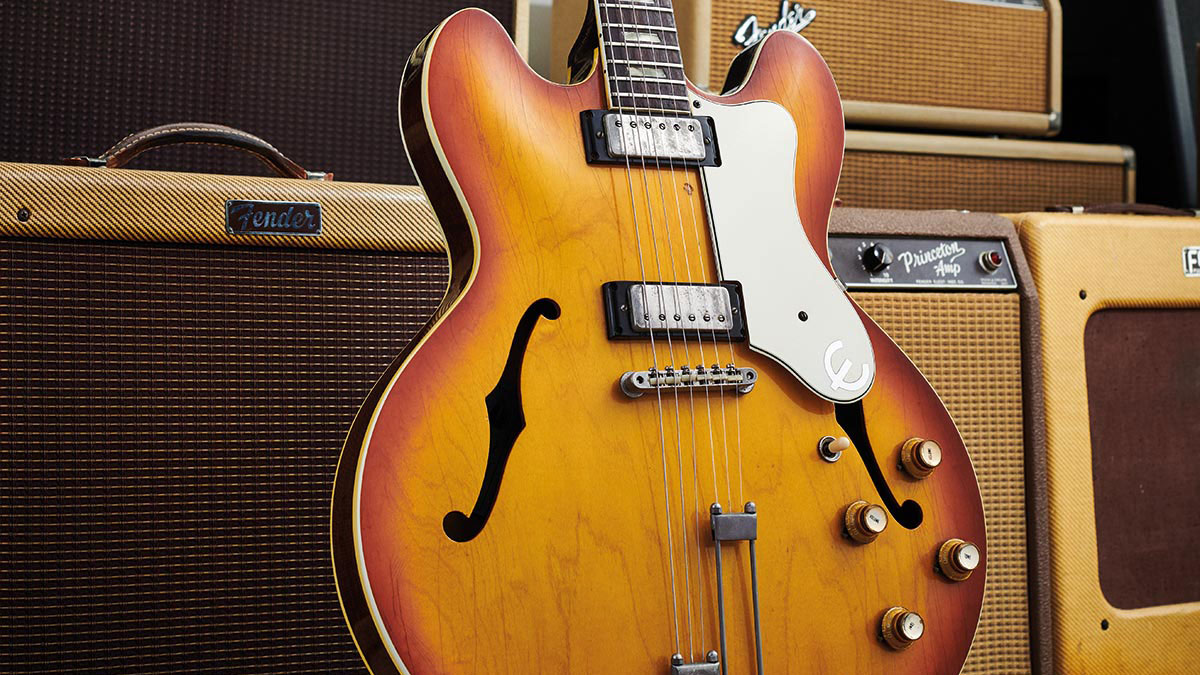
Gibson acquired the Epiphone company in 1957, along with all the tooling, and shipped everything over to Kalamazoo when production ceased on the East Coast. At that time, the quality of Epiphone guitars was on a par with Gibsons and – according to Gibson’s current vice president of product, Mat Koehler – Epiphone was purchased in order to tap into new markets.
Epiphones couldn’t be seen as mere rebranded Gibsons, and one way to establish the difference was to equip them with an exclusive pickup. Earlier in the 1950s, Epiphone had developed a single-coil pickup with off-centre pole screws and a rectangular metal cover.
Gibson’s later PAF humbucker looked a bit like a scaled-up version of Epiphone’s ‘New York’ pickup, so it has been suggested that Gibson decided to develop a scaled-down humbucker that would retain the Epiphone look and slot into the body cutout with minimal adjustment.
The resulting mini humbucking pickup began appearing on Epiphones in 1961 and would later feature on various Gibson models throughout the ’60s and ’70s. The mini-humbucker also appeared in various forms, with significant differences in materials and construction.
Mini PAFs & Pat Nos
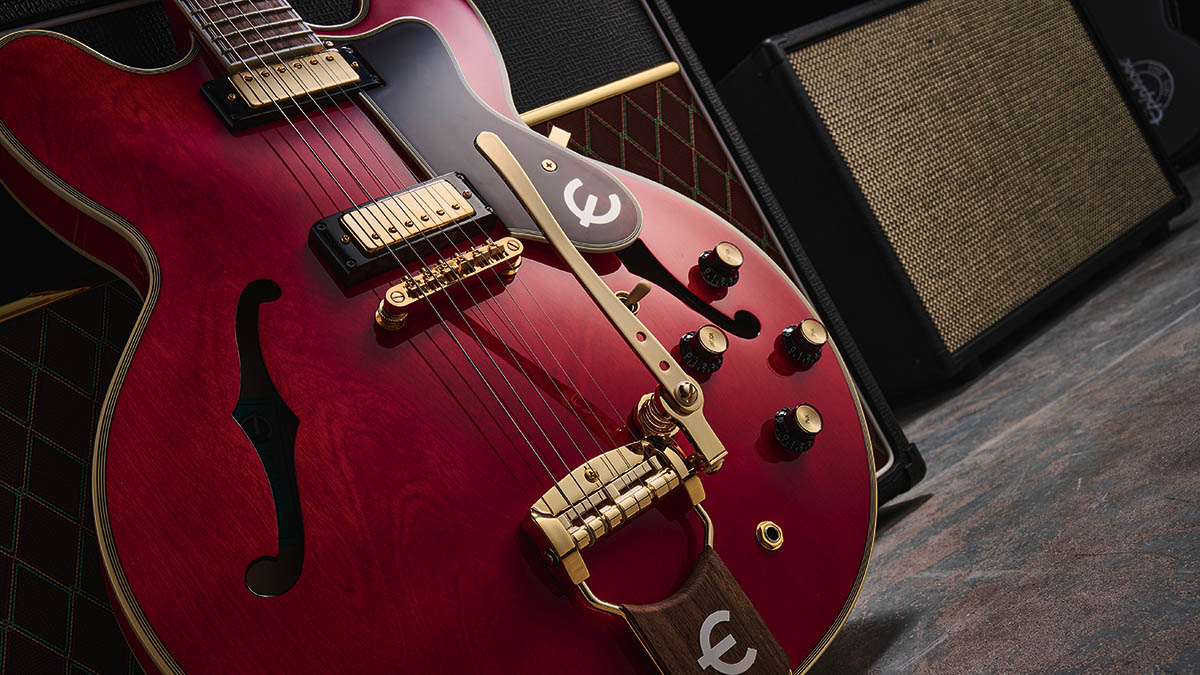
Seth Lover had always considered his full PAF humbucker design to be unnecessarily large and had explored the idea of a smaller version before Gibson acquired Epiphone. Unsurprisingly, the first mini-humbucker was essentially a scaled-down PAF and even carried the same ‘Patent Applied For’ decal.
The reduced dimensions required the use of nylon bobbins that were thinner and smaller than the PAF’s butyrate bobbins. The coils were still wound with 42 AWG plain enamel magnet wire, but the bobbins limited the turns to approximately 4,250 compared with the PAF’s nominal 5,000. Adjustable pole screws with a narrower diameter were used for one coil, but a rectangular ferrite bar was used in the other.
It’s worth noting that if the mini-humbucker had remained exclusive to Epiphone, it may have been a mere footnote in the history of electric guitar pickups
The Alnico V magnet was identical to the shorter 2 5/16-inch type used in later PAFs and Patent Number humbuckers, and with DC resistance readings of 7.5k and above, mini-humbuckers were on a par with some PAFs.
Get The Pick Newsletter
All the latest guitar news, interviews, lessons, reviews, deals and more, direct to your inbox!
The aperture – the area where the pickup detects string vibration – is narrower than a full-sized humbucker, which results in a brighter tone. Mini-humbucker inductance was lower than the full-sized versions, so they sound comparatively rolled off in the low-mids and bass.
During 1961, the Epiphone Windsor, Riviera, Sheraton, Crestwood Custom, Sorrento, Broadway and Zephyr models started transitioning to mini-humbuckers. Later, they appeared in the Crestwood and Wilshire solidbodies, too.
It’s worth noting that if the mini-humbucker had remained exclusive to Epiphone, it may have been a mere footnote in the history of electric guitar pickups. But it went on to develop a following because they ended up being used in Gibson guitars.
The P19

Matt Koehler has suggested that the mini-humbucker actually came about as a result of a “proprietary request from Harmony in Chicago”. This is not beyond the realm of possibility because various versions of Gibson’s P13 pickup, which was the precursor of the P-90, had been fitted to Harmony guitars.
Harmony was the parent company of Silvertone, and in 1961 the P19 appeared on the Silvertone 1446L, which would later become renowned as the Chris Isaak model.
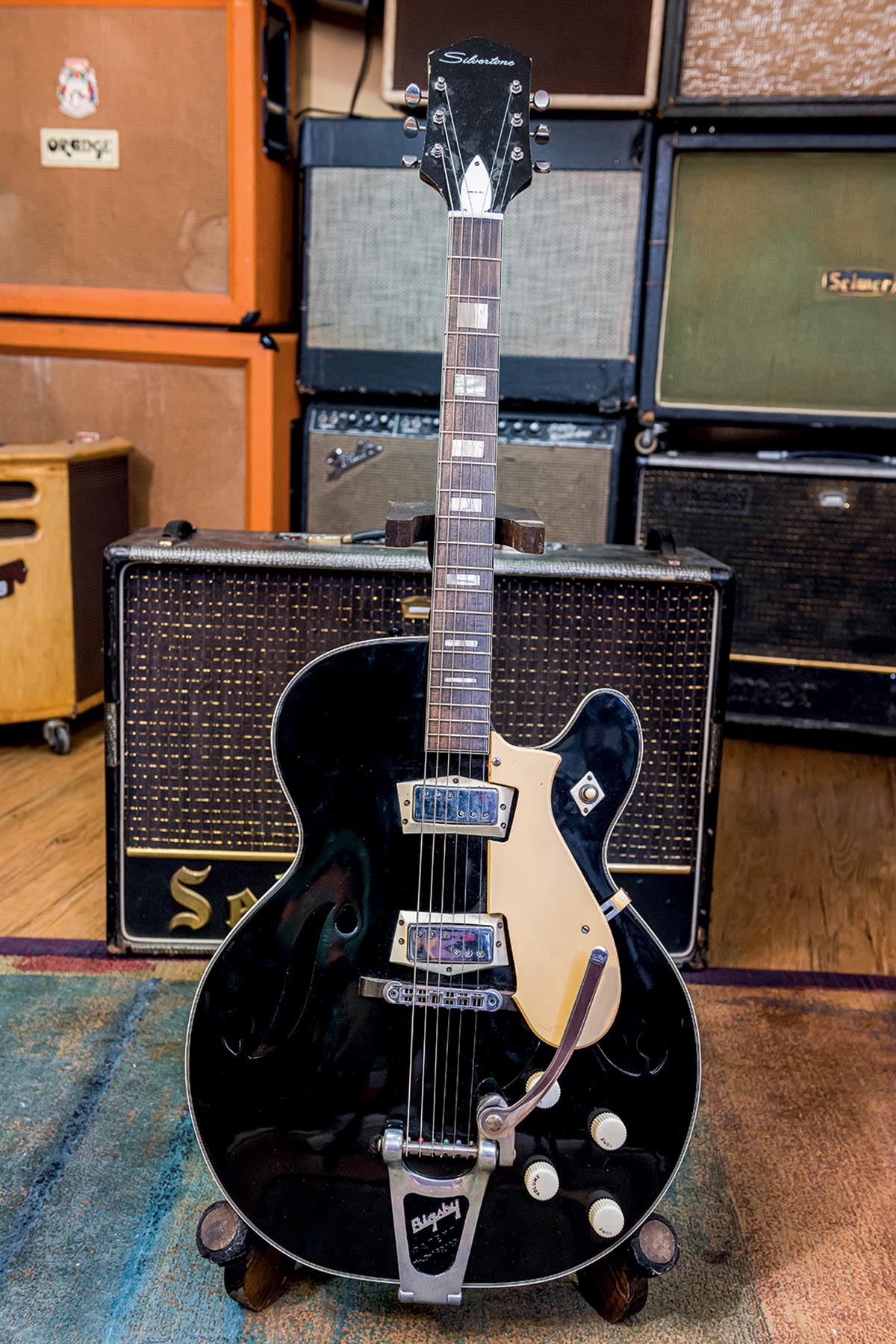
This version of the mini-humbucker had three adjustable pole screws for each bobbin – three for the wound strings and three for the plain. This was an idea Lover would revisit when he left Gibson to design the Wide Range humbucker for Fender.
To achieve this, the iron bar that was installed in one bobbin of Epiphone’s version was cut in two and divided between the two bobbins. Like the Epiphone version, the P19 had a short Alnico bar magnet beneath the bobbins and coils wound with plain enamel wire.
If you’re already thinking of grabbing a cheap pair of early mini-humbuckers from a Silvertone, bear in mind that Seth Lover claimed they weren’t as loud as the Epiphone version and sounded a bit trebly but “did the job”.
Johnny Smith
The signature guitar of renowned jazz guitarist Johnny Smith was actually the first Gibson to be equipped with mini-humbuckers. It was launched in 1961 and was available in both single- and double-pickup versions.
The guitar itself was a premium archtop and the pickups were attached to the neck and pickguard, rather than mounted on the body. This was done to avoid cutting into the carved spruce top and adversely impacting the acoustic tone. So the pickups had to be made thinner and Gibson started by reducing the height of the covers.
Rather than place a bar magnet under the bobbin, they installed a magnetised blade in one bobbin, with the baseplate doubling as a ferrous coupler. Screwing the shortened pole screws into tapped holes in the baseplate completed the magnetic circuit.
Firebird Pickups
When the reverse Firebird model appeared in 1963, it was clearly intended as a high-end guitar so full-sized Patent Number humbuckers would have seemed the obvious choice. But with Gibson already using them on the all-mahogany SG and the ES models, maybe management decided they needed a real point of difference.
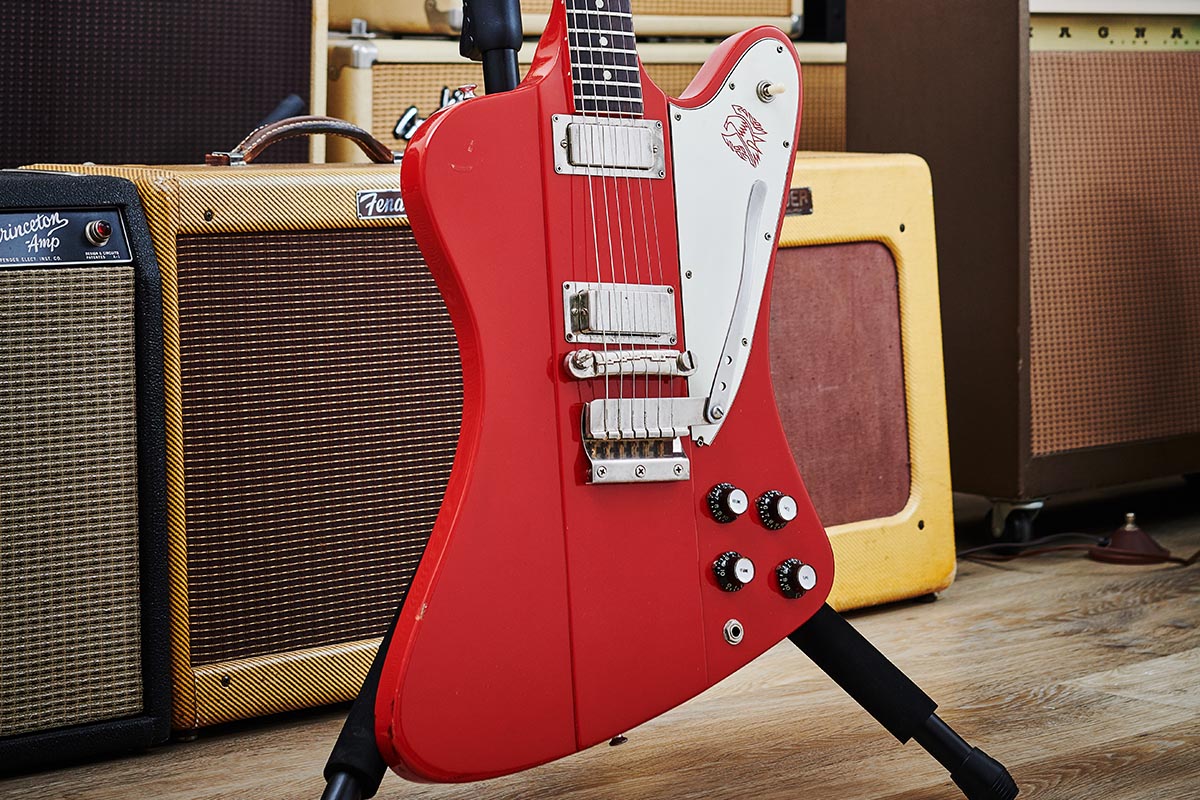
P-90s were not an option because they had been relegated to student models, so attention turned to Epiphone mini-humbuckers. But rather than simply use those, Firebird pickups became a hybrid of the Epiphone and Johnny Smith versions.
In this case you can judge a pickup by its cover because the absence of holes indicates that pole screws were not used. Instead, rectangular bars were fitted in both bobbins and both were Alnico V magnets.
One was positioned south up and the other north up. This meant that Gibson didn’t need to use a separate bar magnet. Instead, a thin ferrous metal plate was fixed under the bobbins along with a pair of maple spacers. A conventional baseplate – with redundant pole screw holes – pressed the assembly into the cover and was secured in place by two solder joints.
Firebird pickups have lower inductance than Epiphone mini-humbuckers, so they have less bass and low midrange grunt, but they’re brighter, chimier and retain clarity with overdrive and distortion. The undisputed king of the Firebird, Johnny Winter, mostly stayed on the neck pickup, but Neil Young’s unique tone comes from an early Firebird pickup installed in the bridge position of his Les Paul.
For the first two years of production, Firebird pickup coils were wound with 42 AWG plain enamel magnet wire. This changed in 1965 when Gibson began using polysol wire. The bobbin wire colour also changed from black to white and the braided output wire exited from a notch cut in the baseplate. On the earlier versions, the braided wire emerged from a gap between the baseplate and the cover.
Some Firebird experts report that the polysol pickups sound thinner and brighter than the earlier plain enamel versions. Gibson also started using fewer turns, which further accentuated the pickup’s toppy sonic character and reduced its output.
Deluxe ’Buckers
Coinciding with the regular PAF, mini-humbuckers started getting Patent Number decals around 1963. Evidence suggests that purple plain enamel wire was retained for mini-humbuckers through to 1965, but Gibson changed to orange polysol-coated magnet wire after that.
These later Epiphone mini-humbuckers have their detractors, with the most common criticisms being thinness and excessive treble. However, the tone of this version is the one most of us will be familiar with because, after flirting with P-90s, Gibson chose to install mini-humbuckers in Les Pauls when the model was reintroduced during the late 1960s.
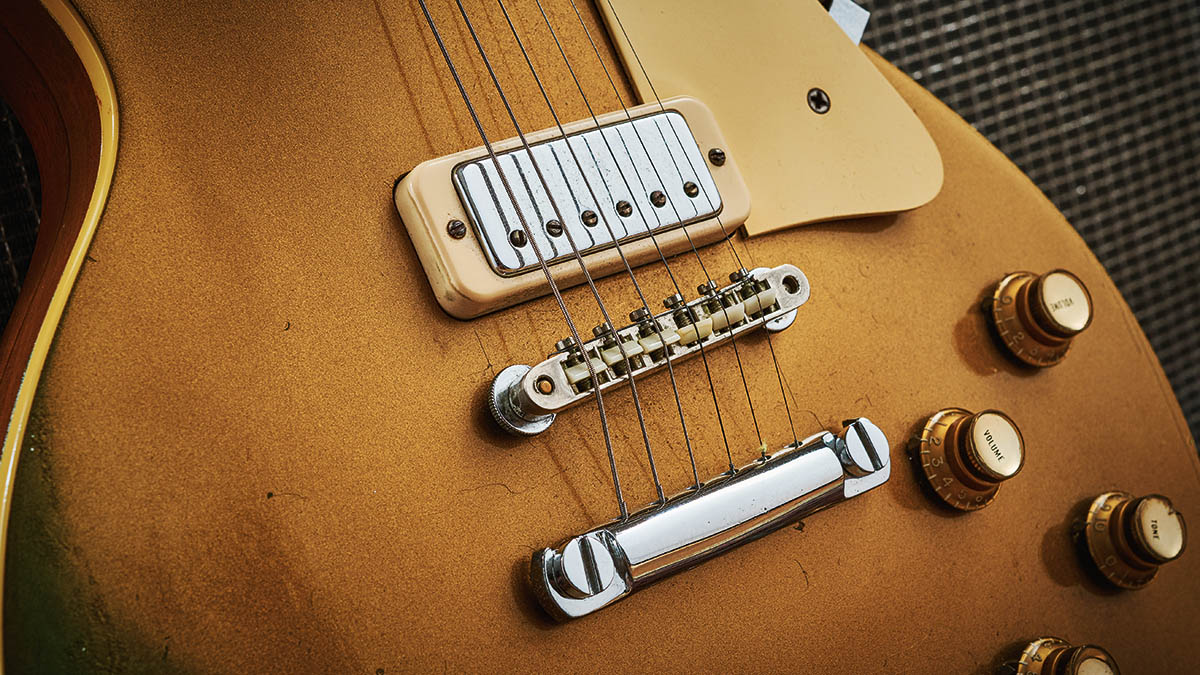
Gibson, supposedly, routed out a year’s supply of Les Paul bodies for P-90s but soon discovered that all those Bloomfield, Clapton and Green fans were uninterested in 1950s-style pickups. Clearly, it would have cost too much to re-rout the bodies for full-sized humbuckers and discarding them wasn’t an option.
Gary Rossington used mini-humbuckers for many of Lynyrd Skynyrd’s seminal tracks before his ’69 Goldtop got pinched in ’73
Instead, Jim Deurloo, who worked in Gibson’s pattern shop, was tasked with finding a workaround. Deurloo realised that mini-humbuckers could fit inside P-90 cavities and a P-90-sized plastic ring was devised to mount the pickups and close the gaps. The Epiphone mini-humbucker remained the stock Les Paul Deluxe pickup from 1969 until 1982.
If you have ever heard a mini-humbucker on record, it was probably powering a Les Paul. Scott Gorham used them in Thin Lizzy, Pete Townshend played Les Paul Deluxes during the ’70s, and Gary Rossington used mini-humbuckers for many of Lynyrd Skynyrd’s seminal tracks before his ’69 Goldtop got pinched in ’73. More recently, they have been championed by both the guitarists from Kings Of Leon.
Lawrence Sidewinder
Following a limited run of so-called ‘Medallion’ Firebirds to celebrate the 1972 Olympic Games, Gibson marked the 200th anniversary of the Declaration Of Independence in 1976 with the Bicentennial Firebird reissue. Both models had the original ‘reverse’ body shape and used regular post-1965-style Firebird mini‑humbuckers.
But there was a twist with the Bicentennial because Bill Lawrence’s ‘Sidewinder’ mini-humbucker was installed in the bridge. Both bobbins were spun around by 90 degrees so the wire coils are oriented towards the strings. Rectangular ferrite bars were pressed into the bobbins and a thick ceramic magnet was placed in between the bars in the centre of the assembly. These can be identified by the serial number stamped into the baseplate.
Firing Up

Vintage mini-humbucker pickups rarely come up for sale, and Firebird pickups are the rarest of all. Beware of recent-manufacture Firebird pickups because Gibson swapped to ceramic magnets and wound them to around 15k using thinner magnet wire.
Elsewhere, most bespoke pickups winders offer mini-humbuckers and the likes of Lollar, Sunbear, Seymour Duncan Antiquities and Fralin are often mentioned in dispatches. Just be aware that some modern Firebird types are too large for vintage metal surrounds.
Huw started out in recording studios, working as a sound engineer and producer for David Bowie, Primal Scream, Ian Dury, Fad Gadget, My Bloody Valentine, Cardinal Black and many others. His book, Recording Guitar & Bass, was published in 2002 and a freelance career in journalism soon followed. He has written reviews, interviews, workshop and technical articles for Guitarist, Guitar Magazine, Guitar Player, Acoustic Magazine, Guitar Buyer and Music Tech. He has also contributed to several books, including The Tube Amp Book by Aspen Pittman. Huw builds and maintains guitars and amplifiers for clients, and specializes in vintage restoration. He provides consultancy services for equipment manufacturers and can, occasionally, be lured back into the studio.
“Classic aesthetics with cutting-edge technology”: Are Seymour Duncan's new Jazzmaster Silencers the ultimate Jazzmaster pickups?
“We’re all looking for new inspiration. Some of us have been playing humbuckers for a long, long time”: Are we witnessing a P-90 renaissance? Warren Haynes has his say
















